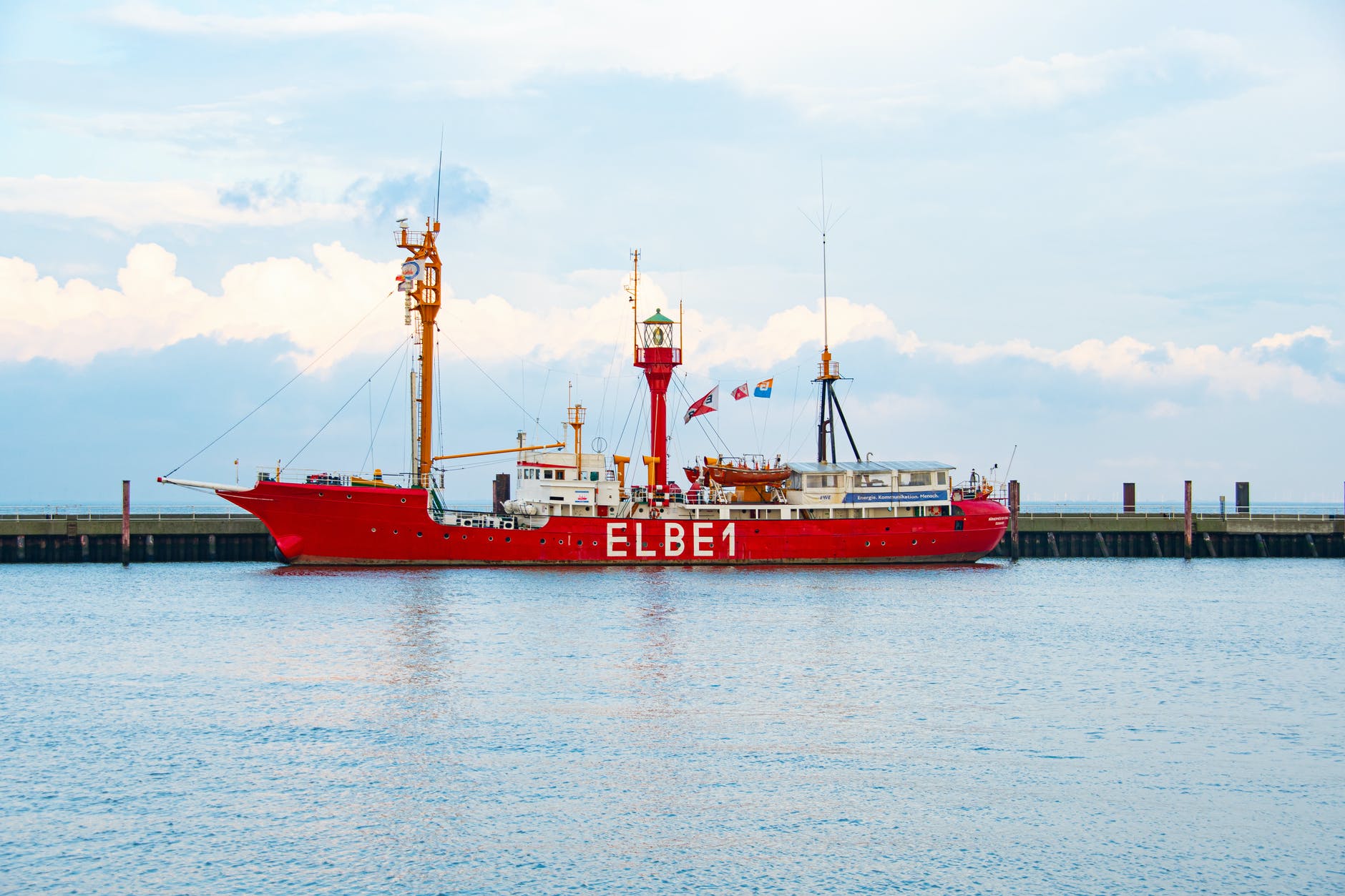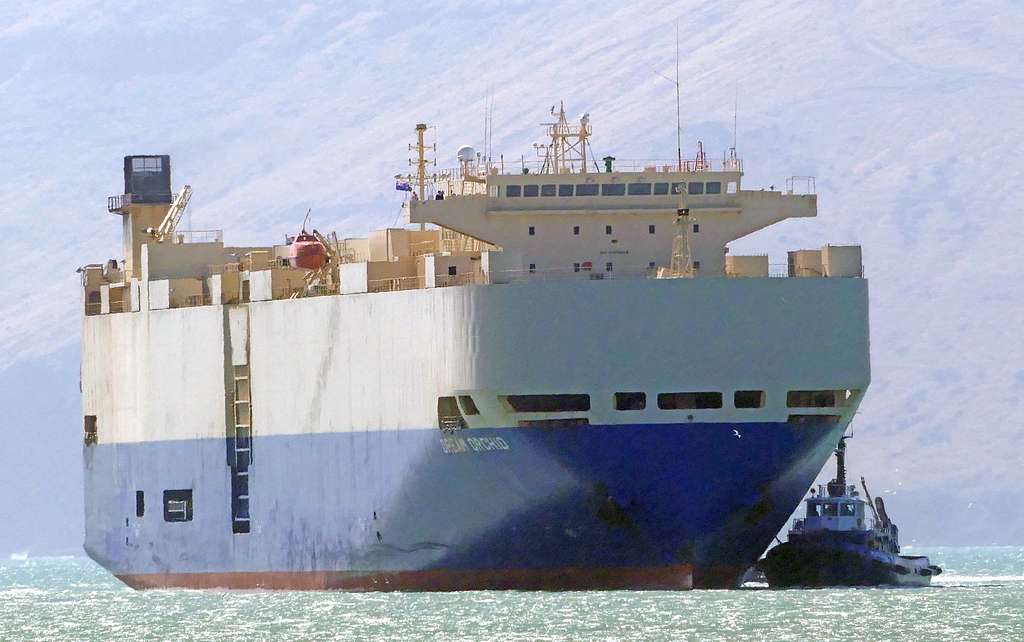A lightship - also called a lightvessel - is a ship fitted out with a beacon on a mast that functions in the same way as a lighthouse: To act as a warning and to help other boats and vessels at night or in overcast and unfavorable conditions safely navigate their passage.
Lightships are commonly used in waters that are too deep for a lighthouse to be constructed.
But that’s just the simple answer and as you might have guessed, there’s a little more to the lightship than that.
Read more: Everything You Need to Know About Tugboats
Although they’re now a dying breed, the history of the lightvessel is an interesting one, so keep reading if you’d like to find out more.
In addition, this article is one in our series of guides to different types of boats, yachts, ships and vessels, so if you’d like to read more about gas carrier ships, roro ships, feeder vessels, heavy lift vessels, chemical tankers, icebreaker ships, car carriers, oil tankers, bulk carriers, dredgers, fireboats, crane vessels, ferries and more, you’ve come to the right place.
Everything you need to know about lightships
Whereas a lighthouse is a building - normally constructed as a tower - a lightship, as the name implies is an actual floating vessel.
They were employed in areas where constructing a lighthouse was too dangerous or difficult, or where the waters were too deep. These days, thanks to increasingly sophisticated architectural designs and construction methods, the lightship has mainly fallen out of use.
Read more: Everything You Need to Know About Mining Ships
That’s not to say that the lightvessel has disappeared completely and nowadays these compact vessels are anchored, unattended, and equipped with radio beacons and fog signals.
Because today’s lightships are unmanned, ensuring the light is maintained at all times is crucial. In order to ensure this, a gimbal is used.
Most often associated with filming and photography, a gimbal is a support system that stabilizes a device - such as a camera - allowing it to pivot smoothly when filming footage.
In the lightship’s case, the gimbal is used to keep the light beam upright when the boat is pitching and rolling in rough seas.
Read more: Everything You Need to Know About Coaster Vessels
However there is one advantage that a lightship has over a lighthouse these days in that it is, obviously, more mobile. This makes it useful when marking a moving hazard, as well as designating harbor approaches and oceanic traffic lanes.
The history of the lightship
Considering that the lightship has mostly fallen out of fashion these days, it probably comes as no surprise to learn it has been around for a while and has quite a rich history.
In fact the lightvessel, in one way shape or form, has existed since Roman times (Roman Empire: 27 BC to 476 AD) when ships used flaming beacons as markers to aid navigation.
Fast forward all the way to 1732 when the first modern lightship, the Nore, was positioned on a submerged sandbank of the same name in the estuary of the River Thames in England.
Interesting fact: The Nore sandbank was the scene of an infamous mutiny in 1797 when seafarers rose up in protest against their conditions.
The leader of the mutiny, one Richard Parker, was subsequently hung from the yardarm of his ship, the HMS Sandwich, two weeks later at 9.30am on the dot.
Read more: Everything You Need to Know About Cable Laying Ships
But although, even today, the shipping industry moves slowly compared to some sectors, maritime evolved further, and the concept of the lightship started to become popular in the United States in the 19th century.
It is in the USA that the design and development of the lightship made huge leaps forward. The most important of which was the redesign of the anchoring system which was modified to provide greater safety and stability in rough seas.
So too was the beacon a focus for modernization and the traditional oil and kerosene lamps gave way to lights that were designed with refractive lenses.
Meanwhile, as the 20th century loomed on the horizon, warning bells were installed on some lightships to act as an additional safety precaution and give an approximation of the lightship’s location when conditions made it difficult to see the lamp.
Read more: Everything You Need to Know About Pilot Boats
However, the lightship’s days were (mostly) numbered and, as mentioned earlier, better construction techniques, plus the huge advancements in navigation systems and satellite communications, and the introduction of automated buoys, have overwhelmingly taken over.
Lightship design and construction
In the past, unsurprisingly, a lightvessel’s hull was constructed of wood. Today’s modern lightships have hulls built from steel or iron, which are not only stronger and more durable, but also non-corrosive and more resistant to damage and the battering of waves and the elements, particularly in harsh climates.
Today, a lightship’s name will be painted in large letters on her hull so that she can be easily identified during the day. In the past, hulls were color-coded to help seafarers on other vessels pinpoint their location.
Read more: Everything You Need to Know About LNG & LPG Tankers
How is a lightship anchored?
It goes without saying that a lightship needs to have a good anchoring system if she is to do her job well. A drifting lightvessel is no use to anyone and could cause a great deal more harm than good.
The lightvessels of the past used fluke anchors to maintain their position. As the name suggests, a fluke anchor has pointed flukes (large flat surfaces or projections) which dig into the mud, sand and sediment, on the bottom of the ocean.
Read more: Everything You Need to Know About Offshore Vessels
Fluke anchors are still used today for lightvessels, however they aren’t as effective if the bottom is anything other than mud or sand, and they are not usually adequate enough to hold a vessel in the exact same location when the seas are rough, instead dragging along the sea bed so that the vessel moves position.
This is where mushroom anchors come in. Often used for permanent moorings, this type of anchor has a central shank and a head that is shaped like a bowl - just like an upside down mushroom. It sinks to the bottom, and the ‘bowl’ fills with mud or sand which then creates a suction like effect, thus keeping the vessel in place.
What are a lightship’s working hours?
It stands to reason that a lightvessel is pretty much redundant during the day, unless conditions are particularly difficult or there is low visibility - such as in foggy weather. They normally operate from sunset to sunrise, with an additional hour either side to maximize their usefulness and effectiveness.
What did the crew do on a lightship?
Whilst modern lightvessels are unmanned, in the past they had crew onboard. Naturally the main duties and responsibilities of the crew were to ensure the lamp was well maintained, and lit and extinguished in accordance with its designated hours, but they did have a few other jobs to do.
For example, they would take weather observations, maintain a record of which ships passed them by, and even spring to the rescue of boats and seamen in distress should the need arise and they were nearest to the vessel in trouble.
Carrying cargo, however, wasn’t, and still isn’t, in a lightship’s remit: That was left to the merchant ships - such as the 19th century’s clippers and today's container and cargo ships. Space aboard the lightvessel would have been primarily for crew accommodation and for supplies such as food and drink, tools and equipment, and of course oil or kerosene in the pre-electric light days.
Find out more about other types of vessels
If you’re still hungry for more information and a deeper understanding of some of the other ships that travel the world’s oceans, take a look at some of our other articles in this series which covers everything from cruise ships and fishing boats to supramax vessels. Meanwhile, if you’d like to learn more about what an icebreaker ship is, find out more below.
Read the previous article in this series: Everything You Need to Know About Icebreaker Ships
Read the next article in this series: Everything You Need to Know About Heavy Lift Vessels

Eve Church
Eve is Martide's content writer, publishing regular posts on everything from our maritime recruitment and crew planning software to life at sea. Eve has been writing professionally for more than two decades, crafting everything from SEO-focused blog posts and website landing pages to magazine articles and corporate whitepapers.
UK

is the only site for maritime jobs




